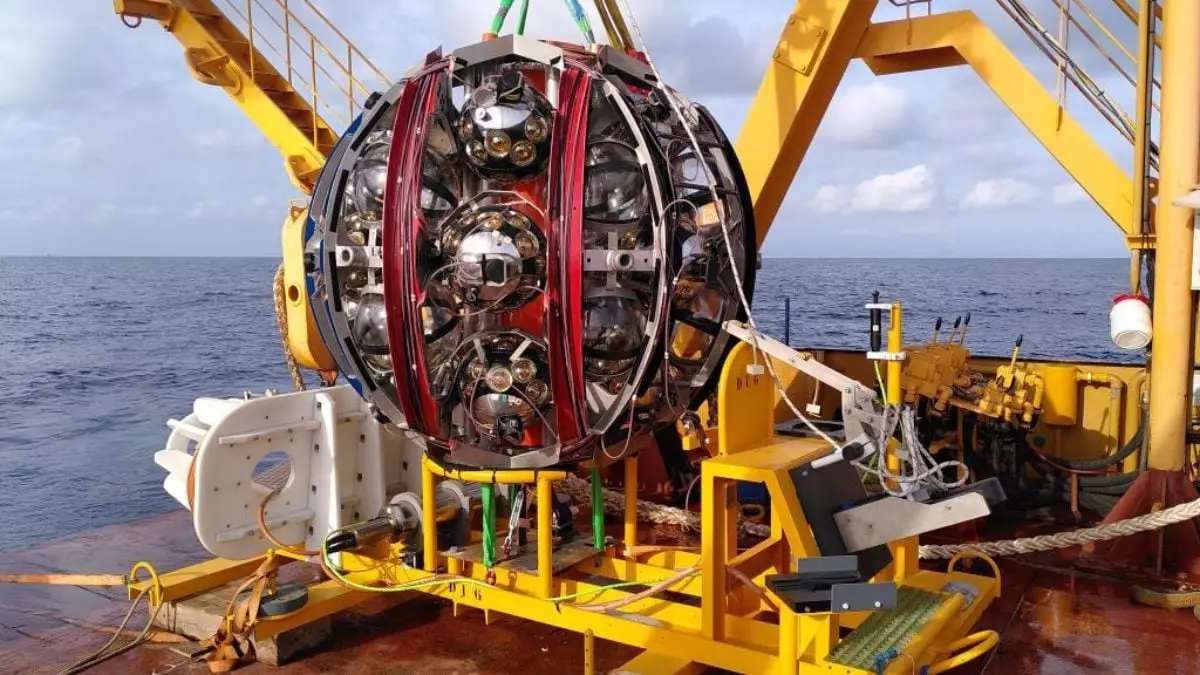The quest to understand the universe’s most elusive particles has led to the development of groundbreaking projects like KM3NeT in the Mediterranean Sea. Neutrinos, notoriously difficult to detect due to their minimal interaction with matter, are subatomic particles produced in cosmic events such as supernovae and black hole collisions. Unlike conventional telescopes that observe electromagnetic radiation, KM3NeT utilizes advanced technology to capture the faint light emitted when neutrinos collide with molecules in seawater. This innovative approach promises to revolutionize our understanding of the cosmos and the fundamental forces at play.
The KM3NeT project is an ambitious endeavor designed to deploy numerous detector strings across a vast area of approximately one cubic kilometer beneath the Mediterranean Sea. Each detector strand is meticulously engineered, composed of glass spheres filled with photomultiplier tubes that detect the faint signals generated by interacting neutrinos. Renowned physicist Simone Biagi from Italy’s National Institute for Nuclear Physics highlights the strategic positioning of these telescopes; one array is stationed off the coast of Sicily to monitor high-energy neutrinos from extraterrestrial sources, while another near the French coast focuses on atmospheric neutrinos and their unique oscillation patterns.
The installation of the KM3NeT telescopes presents a formidable engineering challenge, primarily due to the harsh and unpredictable conditions of the Mediterranean Sea. Each deployment campaign spans approximately one month, during which researchers work tirelessly under tight deadlines. The process involves delicately lowering cables of detectors down to the seabed, each strand carefully designed to unfurl in the water column, resembling strings of pearls. The deployment is aided by sophisticated remotely operated submersibles, which handle the precise connection of cables and conduct inspections underwater, ensuring that every step is executed flawlessly.
Despite the difficulties encountered, preliminary results from the KM3NeT initiative are already providing significant insights into the nature of neutrinos and their interactions. These findings contribute essential information regarding phenomena such as quantum gravity and the distinctions among various neutrino types—knowledge pivotal for advancements in particle physics. As the KM3NeT project progresses, researchers are not only enhancing our comprehension of neutrino behavior but also paving the way for future discoveries that could dramatically alter our understanding of the universe.
As scientists continue to face the rigors of deploying and maintaining this pioneering research infrastructure, there remains a palpable sense of excitement about the potential discoveries that lie ahead. The KM3NeT project is set to redefine neutrino astronomy, offering new perspectives on cosmic events and the fundamental fabric of reality. The collaboration of international teams promises not only to push the boundaries of scientific inquiry but also to inspire future generations in exploring the mysteries of the universe.


Leave a Reply